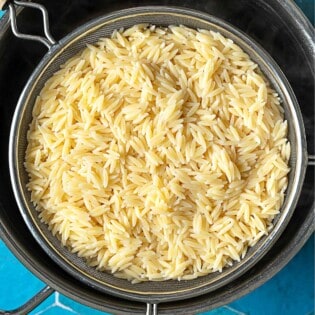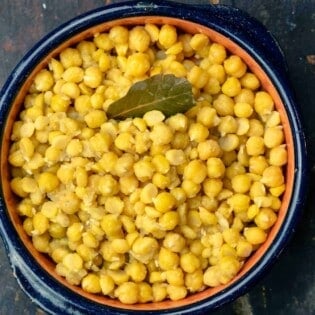Brown rice vs white rice is the topic of hot debate, but what are the facts? Is brown rice healthy, and how much of a difference does it really make? Read all about brown rice, including our favorite ways to cook brown rice and our case for keeping that fluffy white rice on your rotation too!
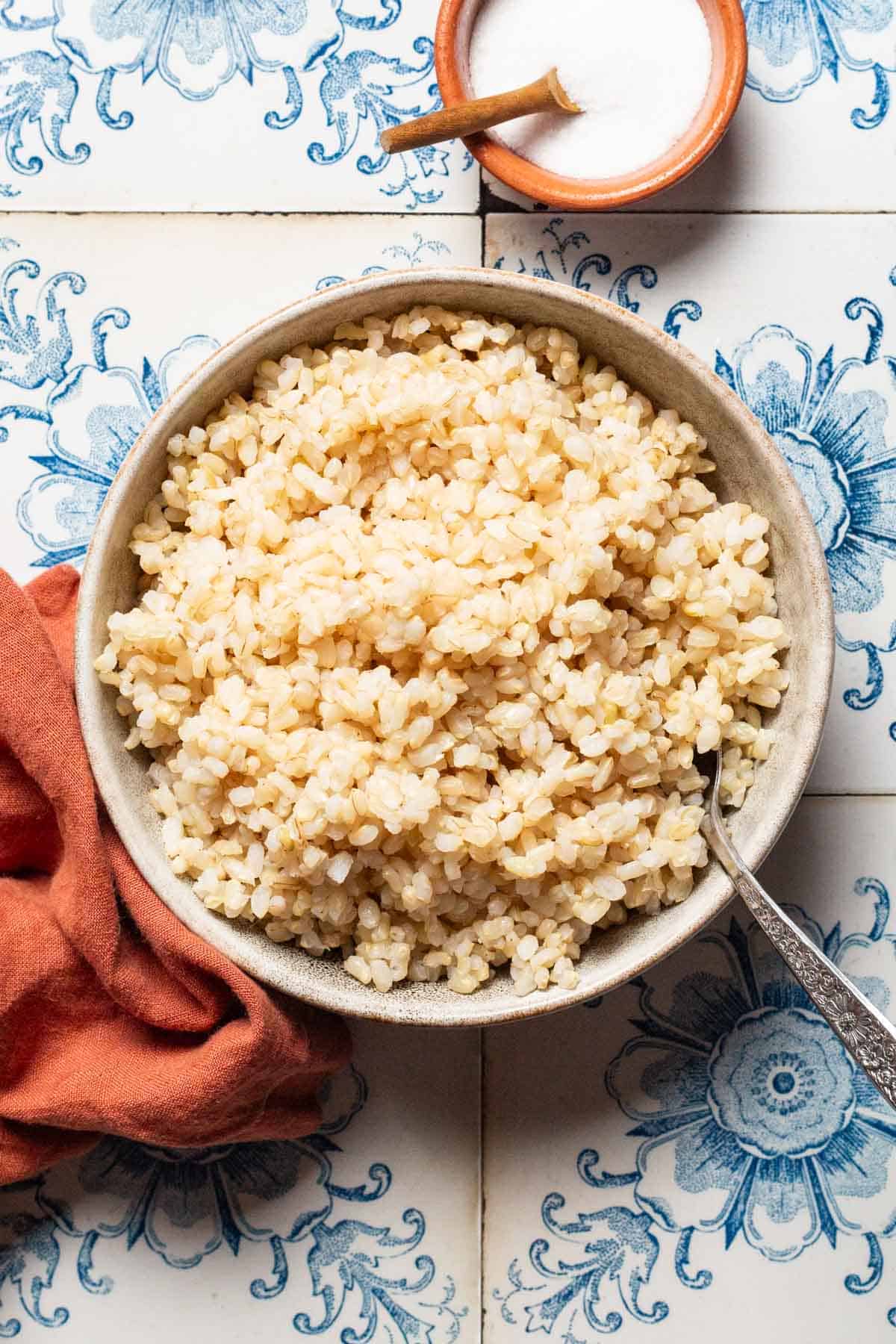
Be it white rice, brown rice, wild rice or otherwise, rice—and grains more generally—are a healthy and essential staple of the Mediterranean Diet. Of course, you should always consult your doctor and make whatever dietary decisions are best for you. But if you’re looking for what is the absolute healthiest, most nutritious option to feed your body, brown rice has a slightly higher nutritional value—and is therefore technically healthier—than white rice.
Brown rice is the same grain as white rice, but with its outer bran layer intact. This process makes brown rice a “whole grain,” versus white rice, which is considered a “refined grain.”
That pesky bran layer contains most of the essential nutrients, such as B vitamins, iron, magnesium, fiber, and zinc. Removing it makes white rice quicker to cook, milder in flavor, and more delicate texture-wise, but it also removes a lot of the good stuff with it.
So how much should we care about that outer bran layer? Read on to find out the benefits of brown rice vs white rice, and if it really matters at the end of the day.
Table of Contents
Brown Rice vs White Rice: Let’s See the Receipts
If you’re wondering how many calories are in brown rice vs white rice, the short answer is that brown rice has slightly fewer calories. According to the USDA, 1 cup of raw brown rice contains 668 calories, versus 702 for raw white rice. In other words, a rather negligible amount, but the nutritional value goes well beyond the numbers.
Phytochemical Profile of Brown Rice and Its Nutrigenomic Implications, a comprehensive study published by the National Library of Medicine, broke down the many, many benefits of consuming brown rice. Here are the key points:
- Lower glycemic index: Brown rice has a glycemic index of 55, compared to 64 for white rice, aiding in better post-meal blood glucose control.
- Rich in phenolic compounds: Offers health benefits including anti-inflammatory, hypoglycemic, anticarcinogenic, antiallergenic, and antiatherosclerotic effects.
- Great source of magnesium: A cup of brown rice provides about 21% of the daily value for magnesium, crucial for over 300 enzymatic reactions in the body. In fact, according to the USDA, there are 26.5 milligrams of magnesium per 100 grams of white rice, compared to 115 milligrams for brown rice.
- Contains higher levels of vitamin E: Contributes to antioxidant activity, maintaining membrane integrity, DNA repair, immune support, and metabolic processes.
- High dietary fiber: USDA sites 0.1 grams of dietary fiber in white rice versus 3 grams in brown rice. Note: this can be tougher on your digestive system, so again, the choice between white and brown rice comes down to your specific needs at the end of the day.
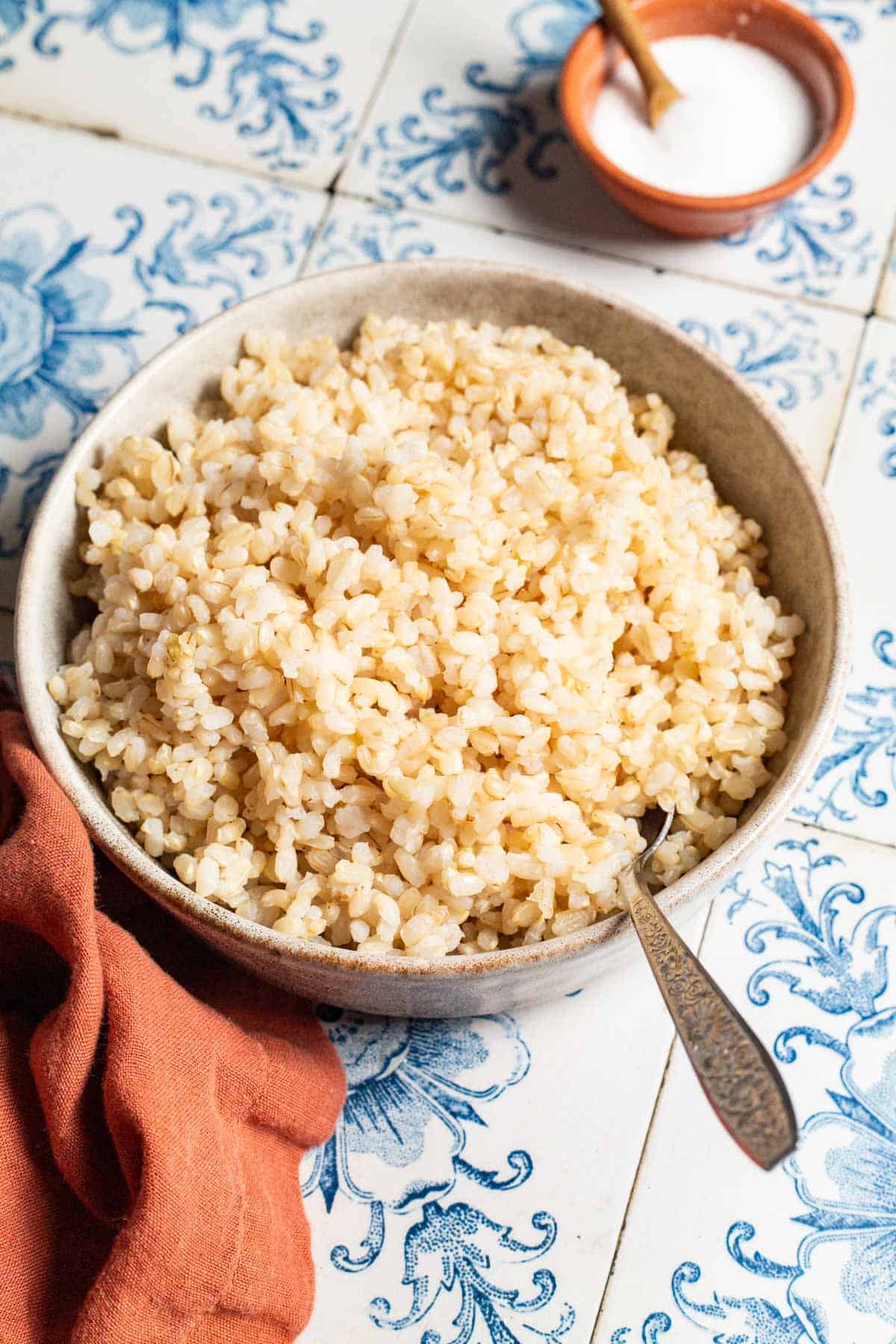
Soak Up the Good Stuff!
Why soak your brown rice? When you soak brown rice in water, it initiates the germination phase. Germination is the first step in the life cycle of rice, when the seed starts to sprout and grow into a new plant.
There are a few benefits to soaking brown rice, including that it reduces the cook time and improves the texture. The same study states, “The benefits of germinated brown rice are that the nutrients found in brown rice are more easily digested and the texture of brown rice is better.” Again, if you’re looking for your textbook “healthiest” option, it’s germinated brown rice.
And many people swear by soaking white rice too!

For the Record: We Still Love White Rice!
We’re a “more is more” team at The Mediterranean Dish when it comes to grains and legumes. We try to incorporate all the beautiful varieties this world has to offer to live a more joyful, wholesome life–that means all the lentils, chickpeas, freekeh, and, yes, both brown and white rice.
White rice is a staple food for billions of people around the world. It’s also a main component of the Mediterranean Diet, which has been voted the number 1 best diet by U.S. News & World Report for 7 years and counting.
More importantly, before the Mediterranean Diet was a buzzword making national news, people have been nourishing their families with white rice for thousands of years, from the golden grains of Italian Risotto Alla Milanese to the irresistibly crispy-crunchy top layer of Persian Tahdig.
So–unless you have a doctor’s recommendation to avoid white rice–don’t fear the grain! Rather, embrace it in all its forms and you’ll be hard-pressed to find yourself bored at your dinner table.
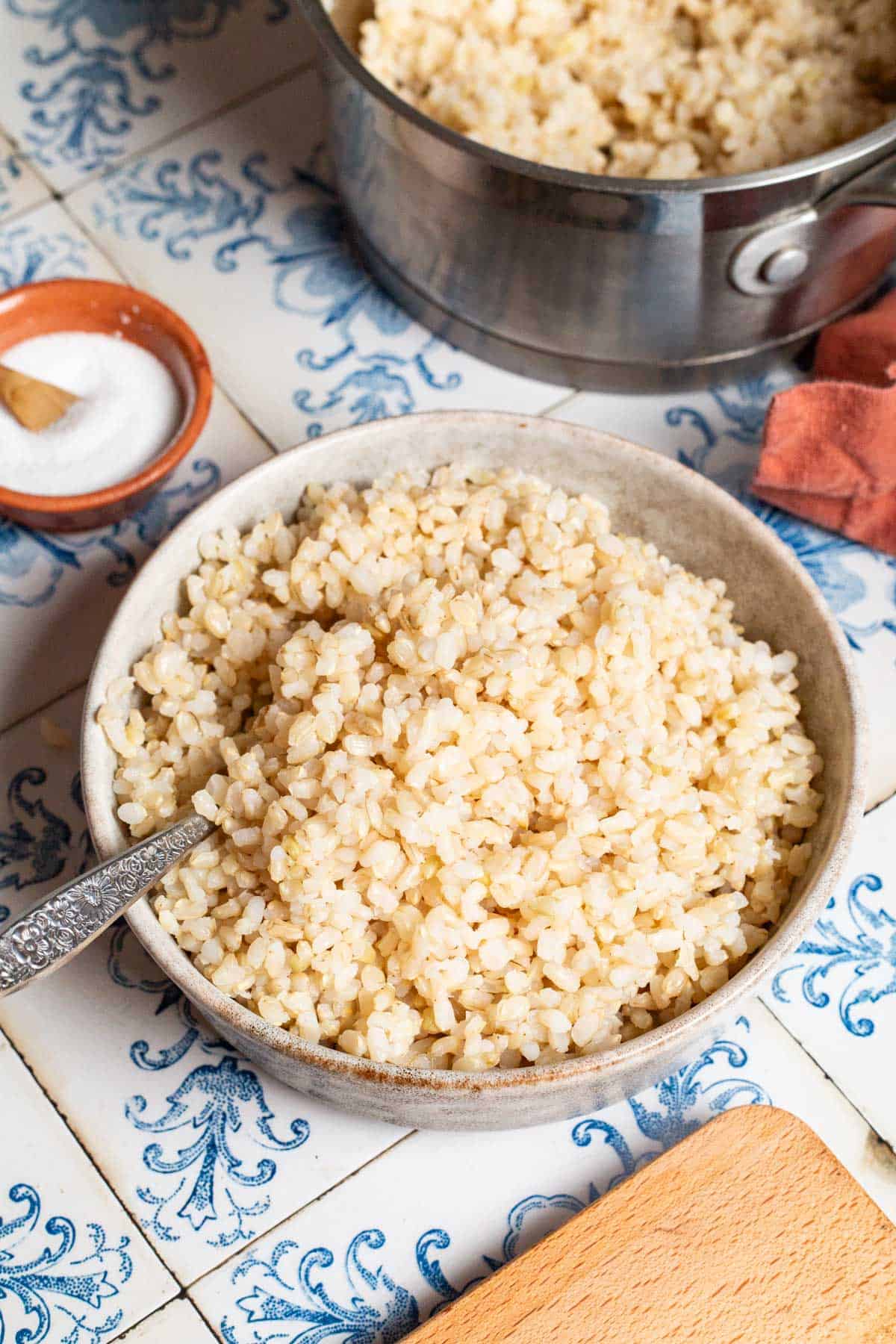
Cooking with Brown Rice
You can certainly substitute brown for many traditional recipes that call for white rice, but I love to celebrate its nutty flavor and slightly chewy texture on its own, particularly in grain bowls or salads. Some ideas:
READ MORE: How to Cook Brown Rice
All About the Mediterranean Pantry!
Browse all Mediterranean recipes.
Visit Our Shop.

Try Our Ancient Grains Bundle
With Freekeh, Farro, Pearled Barley, and Bulgur.



